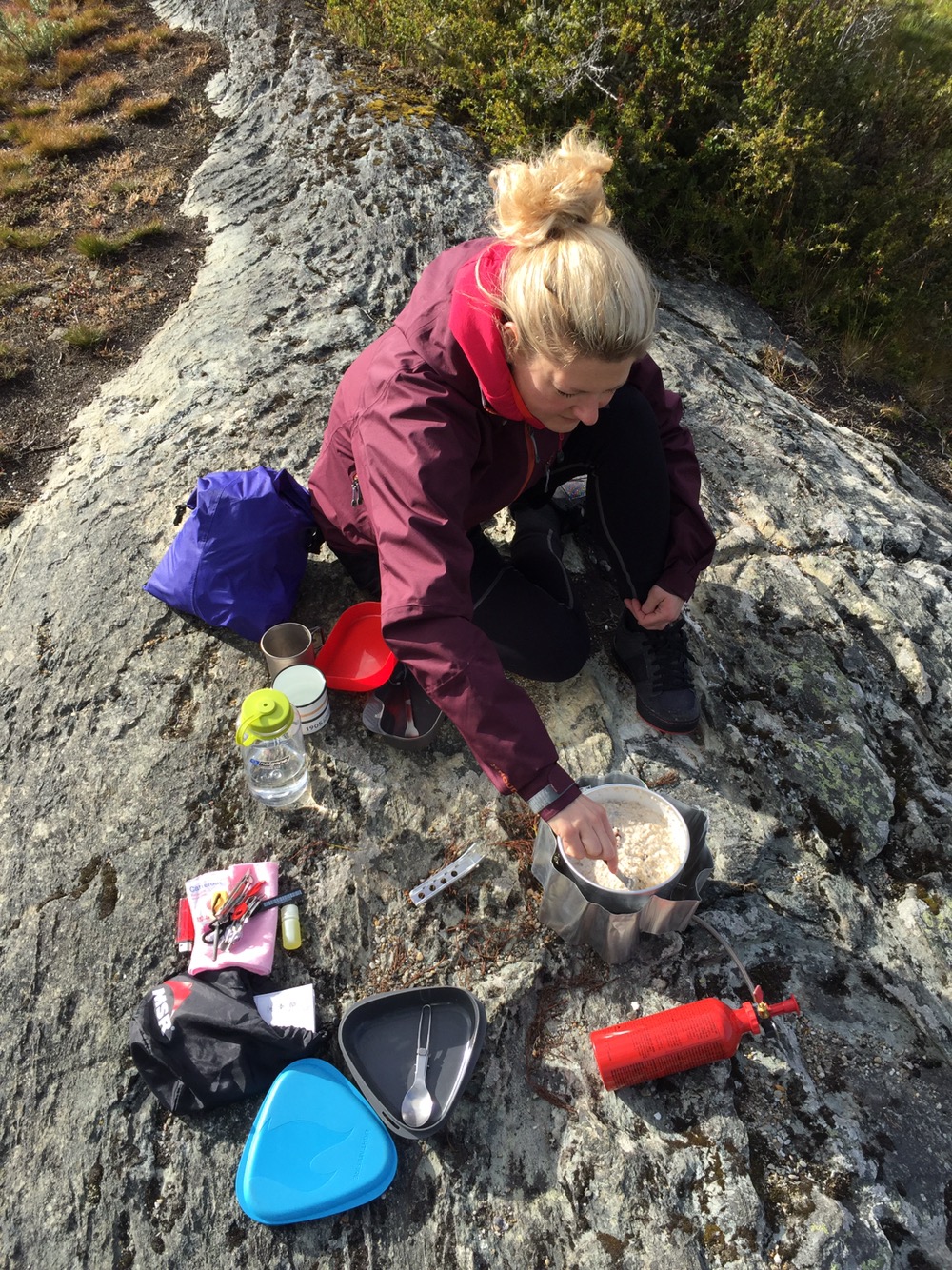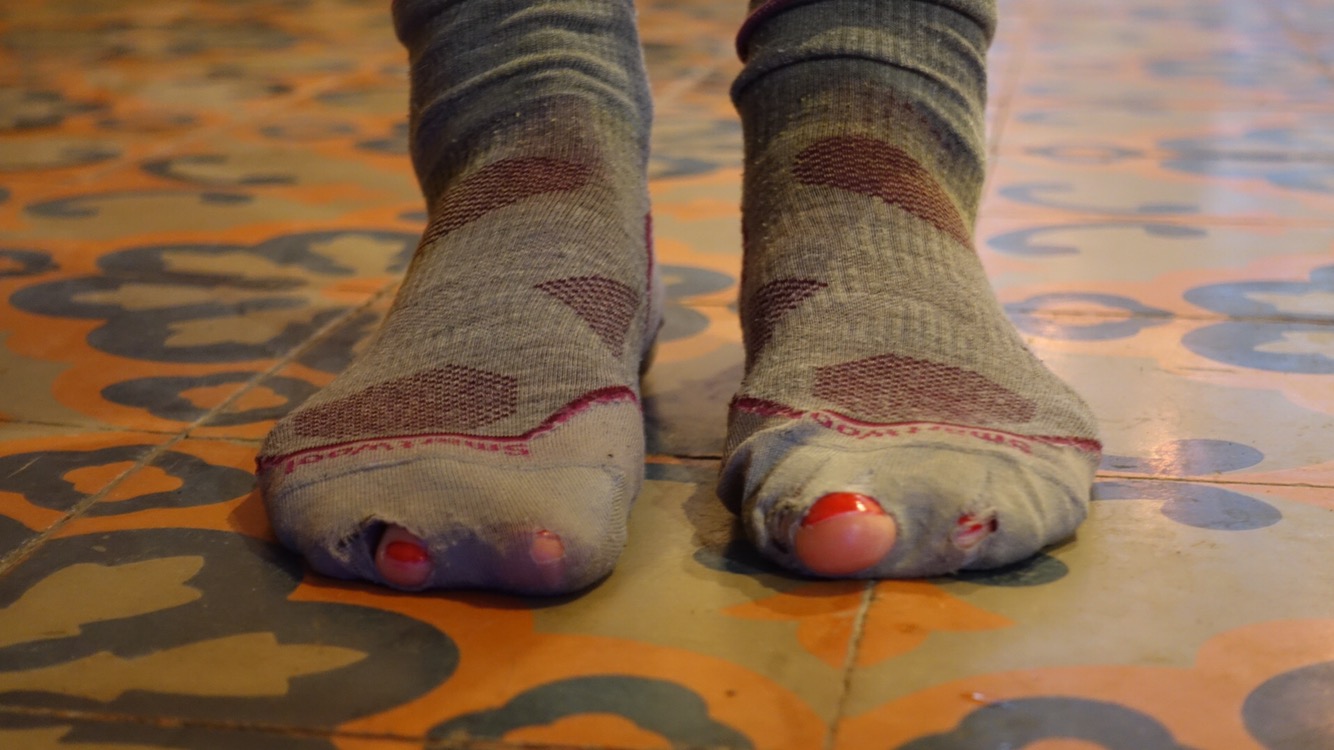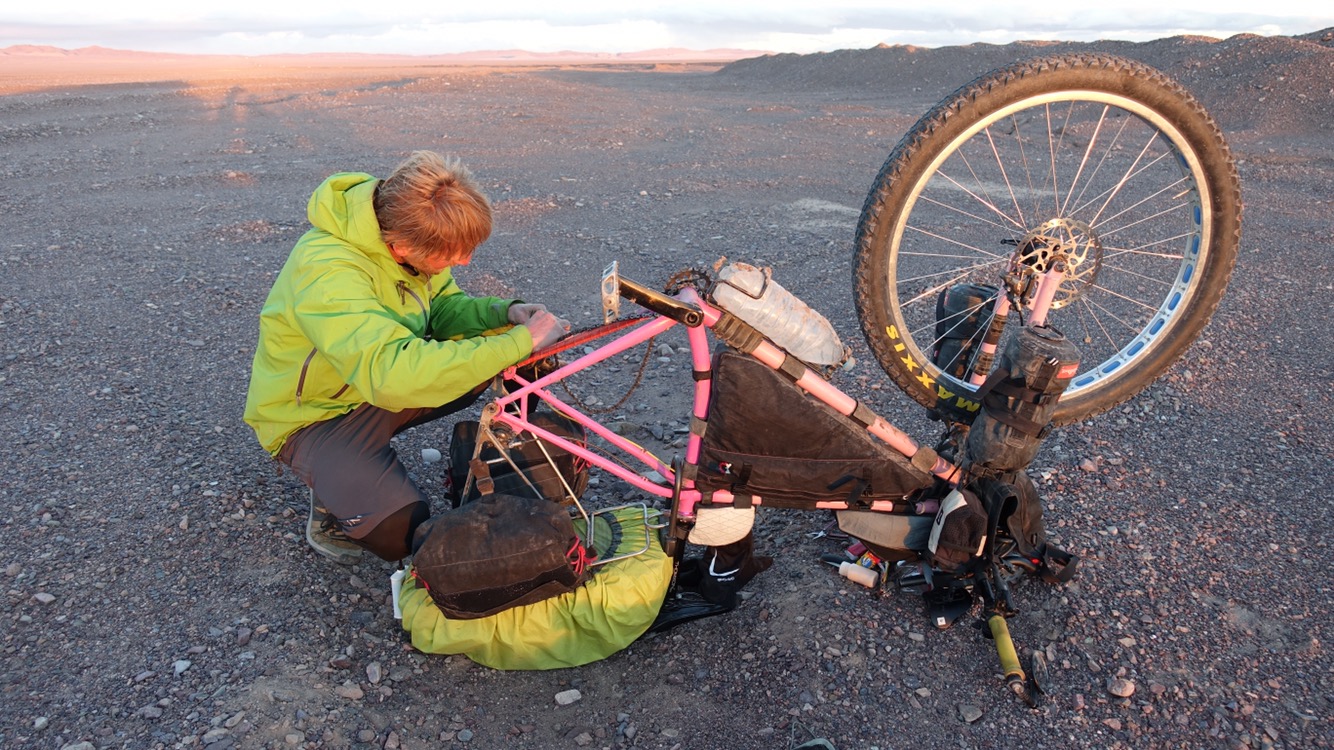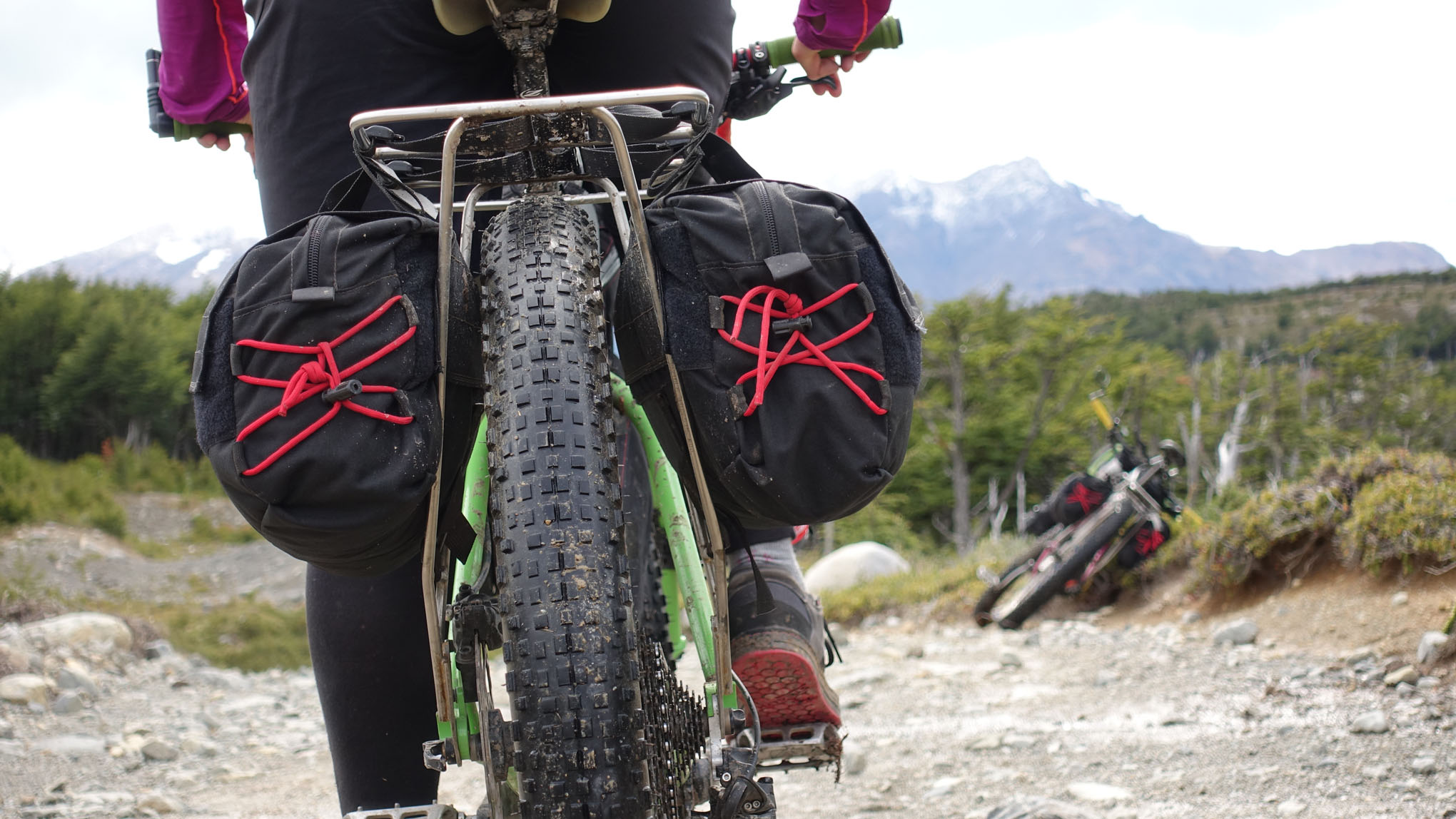In the blog The Ride South, Paul describes how people thought he was homeless when he wanted to change money at the coin laundry in the United States. We sat in our lovely apartment on Vesterbro and laughed about it in our clean-no-holes-nice clothes carefully selected from the closet in the morning. It was fun. Now we laugh at ourselves in our holey T-shirts and shorts with patches. We haven't been mistaken for homeless yet - but we haven't made it to the US yet either.
At home, we look into the cupboard. It can sometimes be a bit difficult to choose clothes depending on the weather, activity and mood. We don't have that problem on this trip. The minimum is packed with only the very essentials to cycle in, cold and rain. At the same time, the boundaries of what we consider clean have shifted. If we've only ridden it for a few days, it's as good as new.
It's fun to see pictures from the start of the trip.
The equipment was fine, clean and some of it new. Now it has some patina after being used every single day for 10 months. And some of it worn so much, it falls completely outside the patina category.
There's something really satisfying about having a few things and in turn fixing it along the way so it can last as long as possible, only to eventually wear it out. We have been doing repairs and sewing ourselves. In Denmark, none of us has stopped a pair of socks, sewn a holey T-shirt, had 15 patches on the same bicycle tube or had a new zipper sewn into a toiletry bag.
Everything can be fixed in South America. EVERYTHING. The quality varies, but it's really a pleasure to experience, things are not just thrown out and replaced with new ones, but they are repaired. We can learn something from that. Especially in Bolivia and Peru there were markets with seamstresses, so here we both had clothes repaired and developed our bag set-up. We really got a lot done along the way.
Kenneth got, among other things, sewed a pair of shorts where he should have changed the zippers in the pockets. It turned out really well - until we discovered the zippers were going their separate ways. We have also experienced a pair of trousers being repaired with some jeans fabric put on the back, shoe bags sewn from mosquito netting, a cover for the backpack, a new zip in a shell jacket and much more.
Kenneth has practically trained as a bicycle mechanic along the way, and if the MSR cooker is broken, it will be taken apart - because otherwise there is an interesting dinner. Once you've had soaked soy protein with a completely unripe avocado for dinner after a full day of cycling in the rain, or cycling the cold altiplano of Bolivia with a jacket that won't zip, you realize how important are things working. Every time.
The equipment is really hard wired for, which we could feel as we worked our way up through South America. We have gone for as light equipment as possible to keep the total weight of the bikes down, as we want to ride away from the country road and onto the technical tracks. On a long trip like this, it is debatable how weight versus durability should be prioritized. The climate in the Andes is especially harsh, and when the equipment is used every day, it really has to be able to handle a lot.
The first thing that started to fail were the zippers in our tent, at the same time it started to have problems keeping tight in heavy rain. Less optimal combination. It was a tunnel tent, so very good for the strong wind in Patagonia, but in retrospect the materials were probably too light for a trip like this, even if it was a quality tent.
There is a real difference between taking a tent on holiday and having it as your home for 20 months. For example, the tunnel tent had only one entrance. Although it doesn't take long to wait for one first and then the other can take their things in the tent, one has to climb over the other to get out to pee at night or you have to lie down to take off your clothes and on, it slowly becomes an annoyance when it's every day.
We switched to an MSR Hubba Hubba NX which has two entrances and where we can sit up inside the tent. We are really happy about that. We have, among other things, used it to eat inside the tent when it has been super cold, raining or so many mosquitoes they eat the food before you do.
The next thing to give up were the zippers in our bikepacking bags. Both bags, which sit on the front of the bikes, got new zippers. Kenneth's framebag got a new home-made design by removing the zipper and instead making a roll closure. There was just a piece of fabric missing, so if it rained it wasn't so good. We were lucky enough to have Revelate send us some new bags with improved zippers.
We have really learned the importance of the essentials working. In that context, we have found that our micro side bags made of Birk from Tardigrade are the most durable of them all. It is really impressive and clear to see, he is used to making products for the military. The same applies to the luggage carrier, which was made together with Tom from OTM bikes. Many cyclists have been challenged by the luggage carrier breaking or shaking loose on dirt roads. Until now, fortunately, we have not had any problems with ours, and they have been tested well and thoroughly in rough terrain.
Good quality is alpha omega for us. It lasts longer and is more sustainable. Our advice is to buy a little, but well, and to bring your favorite clothes, because you have to wear them every day. We've had a few clothes dryers with us that we weren't really happy with, but now we had it, and it was practical. Or it had crept in at the last minute even though it wasn't on the packing list. It's not worth it. It should be nice, nice and nice to wear when it's the only thing you have.
This is where merino wool comes into play. It's absolutely fantastic to cycle in, warms when it's cold and also breathes well when it's hot. Bonus is, it dries quickly and best of all, it doesn't smell (unless you really push it and drive for over a week in the same T-shirt). The same applies to the rest of the equipment. It should be easy. Both to use, clean and pack on the bike.
The challenge with few things is 'no arms – no cookies'. If you lose your spoon there is no oatmeal for breakfast. There is not just an extra pair of sunglasses in the bag, just one pair of shoes, one knife and one usb charger for all our devices. And we have learned that a USB charger is difficult to obtain in South America. It is therefore a challenge if we lose something or something breaks. And it's not a question about something will break, but where, when and what.
In this connection, we have also been reminded of how good products we have in Denmark. Although we have visited the outdoor shops in the larger cities in South America, we cannot find merino clothing, for example. So even though we would prefer to buy locally, we have had our friend bring some products to us when she comes to visit in December. We look forward to Christmas like children.
The bikes have also been exposed to a bit of everything. The many kilometers up to now have not exactly been driven on straight country roads. They have crossed salt deserts, climbed mountains, driven lots of singletrack, mud, dust and rain. That probably corresponds to five seasons on mountain bikes in Denmark. And it has also left its mark on our beloved bikes. 43 lugs, 6 chains, 2 cassettes, 1 rear hub. Twice we have had to wait for spare parts from Denmark. But the worst was when Kenneth's frame broke. The frame had gotten a dent when we were reluctantly evacuated from the Paso Sico pass in Chile due to snow, and the bikes were therefore thrown into the back of a pick-up. Fortunately, the frame broke first in Columbia, which has a strong tradition of building bicycles, and thus we quickly found a workshop that could make a good and durable repair.
Have we also become worn out after cycling the length of South America? Just like the equipment and the bikes, we also need to be maintained, and this is probably where we have failed the most. The plan from home was to do yoga and stretching, but plans are meant to be changed. In any case, it won't be very much (read no) yoga, and even if we are lucky not to have any injuries, we can feel that the body is getting a little stiff in it. We are happy that the legs are at least well trained.
Mentally, we have also learned that it is important to have time and energy to be able to take in the experiences and process them. It is not a small vacation with full throttle for three weeks, after which you can sort through pictures and put impressions into perspective. This is our everyday life. We have therefore become better at taking breaks where we do nothing.
On the other hand, our minds and hearts are not worn out, but enriched with an incredible number of good and exciting experiences. We are grateful for everything we have learned along the way and all the inspiring people we have met. We were curious what it would be like to travel this way and if we would get tired of unpacking and unpacking every day. Tired of being on the road. Fortunately, we can now conclude that we love it. We enjoy every day and every day remains an adventure.





















